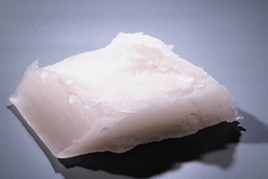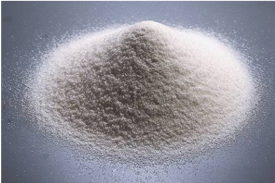What is SAP – superabsorbent polymers
SAP or Superabsorbent polymers is a material which can absorb up to 300 times their weight in aqueous fluids. Once absorbed, they do not subsequently release it. They are therefore an ideal material for use in products which are designed to contain fluids such as baby diapers/nappies, incontinence products, and feminine hygiene pads and liners.
The majority are made of sodium polyacrylate and available in granular form or as fibers. The granular material is a polymer made up of millions of identical units of sodium acrylate formed into a chain-fence like structure. These are then linked together to make the material into a three-dimensional network. In their dry state the long polymer chains are coiled. When they absorb liquid, they uncoil, and the network expands. The liquid is then stored in the spaces in the molecular network and the material forms a gel which locks the liquid in.
The benefits of superabsorbent polymers
They help keep the skin dry. This is done by drawing the liquid away from the skin and absorbing and retaining it in the core of the product. This creates greater comfort for the user.
They help protect against skin irritation in diaper users by reducing skin wetness. If skin becomes too wet it is more vulnerable to irritation because the natural balance of the skin, which helps protect against harmful bacteria, can be compromised. This is especially so in the presence of faeces and associated enzymes.
They help prevent the spread of infections. The containment of fluid in the superabsorbent core reduces leakage. It also reduces the risk of urine mixing with faecal material and becoming contaminated with microorganisms which can cause the spread of diseases such as diarrhoea and gastroenteritis.
- They offer improved quality of life and personal dignity. Many people suffer from a lack of bladder or bowel control as a result of illness, disability or age. Disposable products with superabsorbents help many of these individuals and their care-givers maintain a quality of life with greater mobility and independence.
The safety of superabsorbent polymers
Superabsorbents are safe for use in absorbent hygiene products. They have been extensively tested and researched. Scientists and doctors alike have reviewed the research and confirm that superabsorbent material is safe.
Superabsorbents have a proven history of safe use and their benefits have been widely recognised by experts in toxicology, general medicine, nursing and paediatrics. The use of superabsorbent polyacrylates in personal hygiene products has brought considerable health, hygiene, environmental and lifestyle benefits to the carers and people using these products.
How are superabsorbent polymers made
The main ingredients are acrylic acid, sodium hydroxide (or a similar neutralizing agent) and water plus a cross linker which forms the bridge that links one polymer chain to another.
This solution is mixed together and undergoes a polymerisation process to form the three-dimensional networks of polymer chains. This takes the form of an aqueous gel.
The granules are ground and sieved to the desired particle size. At this point the superabsorbent material can be further cross linked to give the material specific absorbency characteristics.



